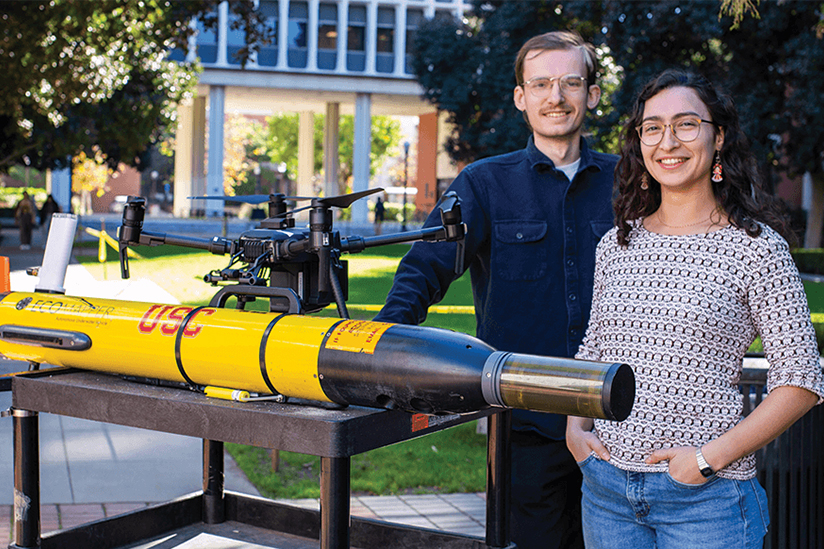USC computer scientists and biologists have teamed up to tackle harmful algae blooms using “smart” robots
Harmful algae blooms in lakes are a major environmental problem, producing extremely dangerous toxins that can taint water supplies or harm other organic life— including people. Biologists can test water safety by collecting samples off the side of a boat, but getting relevant data is no small task, especially in lakes that cover hundreds of miles.
And while algae blooms can spring up anywhere, finding optimal sites to sample is like looking for a needle in a haystack.
As a result, biologists currently find algae concentrations through trial and error and struggle to anticipate new growth, prolonging the discovery of potentially harmful algae and wasting time and labor in the field.
Now, USC computer scientists and biologists have developed a way for autonomous robots to find prime sample spot locations for toxic algae, before a scientist even steps foot onsite. The team recently presented the paper, titled Informative Path Planning to Estimate Quantiles for Environmental Analysis, at the International Conference on Intelligent Robots and Systems (IROS.)
“Currently, many robots used by scientists in the real world do not have autonomy or adaptivity,” said co-first author Isabel Rayas, a computer science PhD student advised by Gaurav Sukhatme, the Fletcher Jones Foundation Endowed Chair in Computer Science and Professor of Computer Science and Electrical and Computer Engineering.
Locating Harmful Algae
California is no stranger to harmful algae blooms, especially in recent years as climate change causes temperatures to rise and disrupts water systems. Lakes, reservoirs, and other bodies of water have become saturated with cyanobacteria that can cause toxic algae blooms, to the point where those living nearby face health complications from ingesting toxic fumes.
It’s very difficult to fight blooms after they’re in full force. In some cases, the chemicals used to treat water can even make the problem worse. That’s why biologists’ ability to keep tabs on cyanobacteria levels is an extremely important task.
I’ve Got a Plan
“Big problems don’t fit neatly into disciplinary boundaries — you have to think out of the box. For me, as a computer scientist and roboticist, collaborating with Professor Caron’s group has been an education,” Sukhatme said. “We’ve learned how to pose problems in new ways leading to solutions that would have never occurred to us before.”
Both Denniston and Rayas value working with biologists because it’s given them the opportunity to tackle environmental issues using computer science. They believe that their informative path planning model could be applied to other kinds of surveys on land in the future.
“I think it’s really great that we have this collaboration with the biology lab, and it gives us a grounding to why we’re doing what we’re doing and that it’s in the human interest,” Rayas said. “I started working on this because I was looking for a way that robotics can be impactful in a positive way for the environment.”
